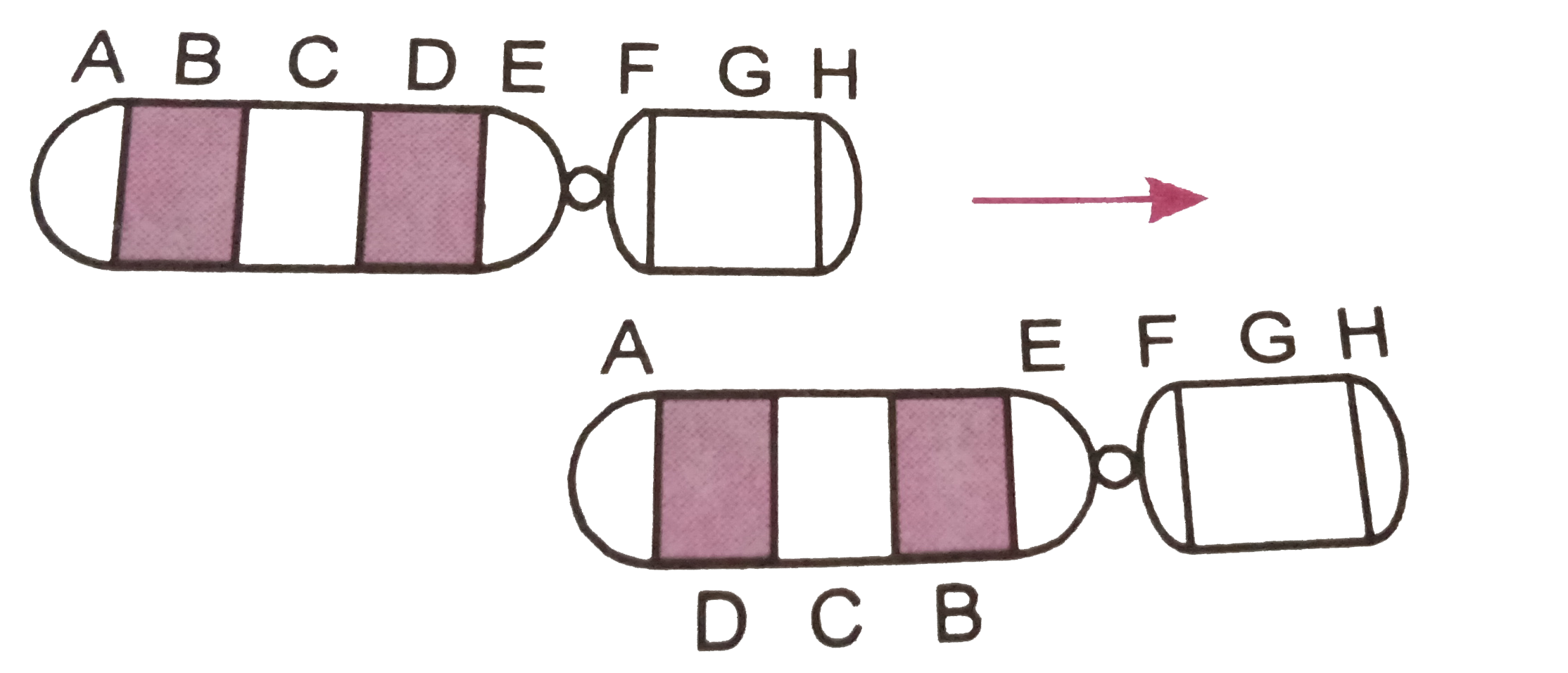What are duplication and translocation in connection with chromosomal mutation?
Step-by-Step Text Solution
Step 1: Understanding Mutation
- Mutation refers to sudden, heritable changes in the genetic material of an organism. These changes can be beneficial, harmful, or neutral.
Step 2: Defining Duplication
- Duplication is a type of chromosomal mutation where a segment of the chromosome is copied (duplicated).
- For example, if a chromosome has the gene sequence A, B, C, D, E, and a duplication occurs for the genes B and C, the new sequence would be A, B, C, B, C, D, E. This means that the segment containing B and C is repeated.
Step 3: Understanding Translocation
- Translocation is another type of chromosomal mutation where a segment of a chromosome breaks off and attaches to a different chromosome or a different location on the same chromosome.
- For instance, if we have a chromosome with the sequence A, B, C, D, E, F, and a segment (B and C) is translocated, the new sequence might look like A, B, E, F, B, C. Here, the segment B and C has detached from its original position and attached elsewhere.
Step 4: Summary of Effects
- Both duplication and translocation can lead to changes in the genetic makeup of an organism, which can result in variations that may be beneficial or harmful to the species.
- Mutation refers to sudden, heritable changes in the genetic material of an organism. These changes can be beneficial, harmful, or neutral.
- Duplication is a type of chromosomal mutation where a segment of the chromosome is copied (duplicated).
- For example, if a chromosome has the gene sequence A, B, C, D, E, and a duplication occurs for the genes B and C, the new sequence would be A, B, C, B, C, D, E. This means that the segment containing B and C is repeated.
- Translocation is another type of chromosomal mutation where a segment of a chromosome breaks off and attaches to a different chromosome or a different location on the same chromosome.
- For instance, if we have a chromosome with the sequence A, B, C, D, E, F, and a segment (B and C) is translocated, the new sequence might look like A, B, E, F, B, C. Here, the segment B and C has detached from its original position and attached elsewhere.
- Both duplication and translocation can lead to changes in the genetic makeup of an organism, which can result in variations that may be beneficial or harmful to the species.
Topper's Solved these Questions
- PRINCIPLES OF INHERITANCE AND VARIATIONBOOK - ICSECHAPTER - PRINCIPLES OF INHERITANCE AND VARIATIONEXERCISE - PRACTICE QUESTIONS ( LONG ANSWER TYPE QUESTIONS)
24 Videos
- PRINCIPLES OF INHERITANCE AND VARIATIONBOOK - ICSECHAPTER - PRINCIPLES OF INHERITANCE AND VARIATIONEXERCISE - PREVIOUS YEAR.S BOARD PAPER QUESTIONS (VERY SHORT ANSWER TYPE QUESTIONS)
8 Videos
- PRINCIPLES OF INHERITANCE AND VARIATIONBOOK - ICSECHAPTER - PRINCIPLES OF INHERITANCE AND VARIATIONEXERCISE - PRACTICE QUESTIONS ( SHORT ANSWER TYPE-I QUESTIONS)
15 Videos
- ORGANISMS AND POPULATIONSBOOK - ICSECHAPTER - ORGANISMS AND POPULATIONSEXERCISE - COMPETITION CORNER (ASSERTION AND REASON TYPE QUESTIONS)
22 Videos
- QUESTION PAPER 2022 TERM 1BOOK - ICSECHAPTER - QUESTION PAPER 2022 TERM 1EXERCISE - MULTIPLE CHOICE QUESTIONS
45 Videos
Similar Questions
Transpiration and Translocation
View SolutionTranslocation involves
View SolutionDefine translocation.
View SolutionWhat is meant by chromosomal mutation?
View SolutionWhat is translocation?
View SolutionGiven in the figure is chromosomal mutation It is

View SolutionDefine. Translocation of gene in chromosome.
View SolutionSelf duplication does not occur in :-
View SolutionWhat causes mutations?
View SolutionThe translocation of solute is
View Solution
